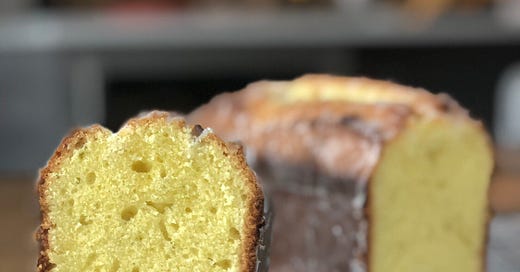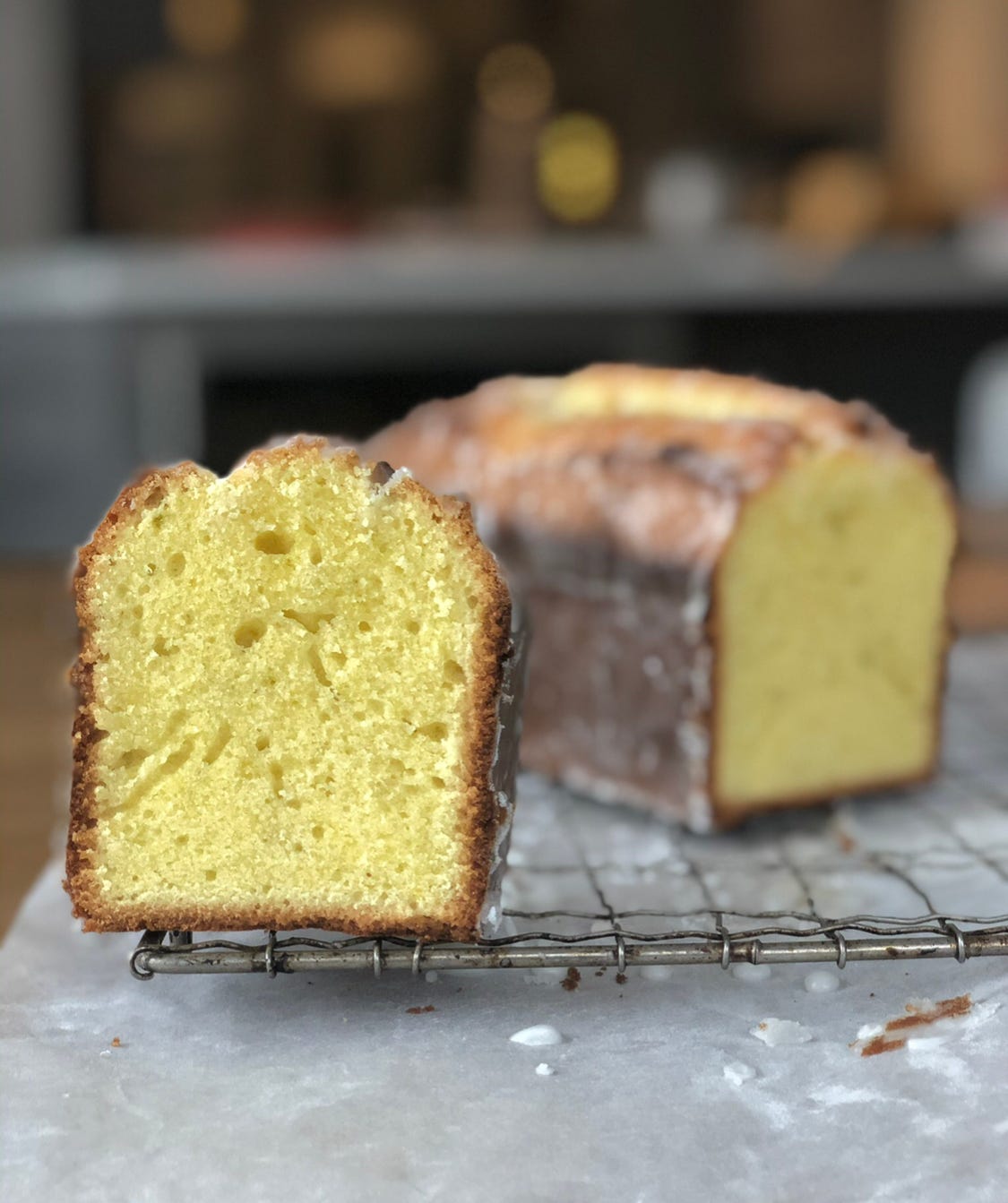Lick my Plate is one year old this week!
So I wanted to start this newsletter with a word on subscriptions.
I am so pleased to have attracted thousands of subscribers this year, with paid subscribers numbering in the hundreds. Thanks to you for supporting my work and this newsletter. I really appreciate it. And if you haven’t subscribed, there’s no time like the present!
That said, I’m aware the Substack scene is getting crowded and the number of platforms for recipes seems infinite. A note that came in this week seems to sum up the way many people feel about the ever-increasing number of newsletters landing in our email boxes at an alarming rate.
“Too many subscriptions, too many recipes to print or manage across various apps, and too costly…”
It’s always disheartening to see people unsubscribe, but frankly, I get it. I too am cutting back for many of those same reasons. So upon reflecting I’ve decided to drop the subscription rate from $7 to $5 a month.
$5… a dollar LESS than a pound of butter these days!
I always feel bad when placing a post behind a paywall, so I’m thinking now that I’ll offer some extra recipes behind the paywall (like today), and of course access to archives after two weeks will remain paywalled.
My goal is always to make these newsletters fun and worthwhile, uplifting and educational. But churning out recipe after recipe can become formulaic after a while. (Winter weather: onion soup! Spring: asparagus recipes! Summer: let’s BBQ!, Fall: a new approach to turkey leftovers!).
So on this one year anniversary, I’m rethinking the goals of this newsletter. I don’t want to drop it, but I do want to make it more than just another outlet for recipes. Some subscribers have requested more restaurant reviews, some more wine suggestions. It’s not easy to hit all those marks, especially restaurants which require a generous budget to cover costs. But I’m taking it all into consideration.
That said, this week I decided to post… a recipe! Yeah, I know. So much for changing things up. But allow me this opportunity to talk about a baked good we all love: lemon loaf!
Do you love lemon loaf? I’d bet a definite YES on that one. I love it too, but I also enjoy making it. Not only because a slice of fresh lemon loaf sure beats those crusty, day-old ones sold in coffee shops, but especially because it’s so inexpensive and easy to make.
The first lemon loaf I made was probably some 30 years ago, when I tore through all the recipes from the Roux Brothers pâtisserie book. There on p. 206-207 was the most gorgeous centrefold of tea cakes starring, on the far left, the most appealing cake au citron. It’s an easy recipe that produces a light and lovely cake, ideal for tea, dessert or packing in a school lunch. The first time I made it, I ate the entire cake myself.
My next lemon loaf was discovered in France back in 1990 when I worked for a chef by the name of Yves Thuriès. There I was introduced to a cake called “Le week-end,” a dense tea cake with a velvety crumb, the whole incapsulated in a thin glace à l’eau (glaze). The reason it was called a weekend cake was because it was said to stay fresh for a whole weekend due to its high butter content. I absolutely love this French cake (which is found in my books Chez Lesley and Make Every Dish Delicious) but had a heck of a time getting the recipe just right to adapt to North American ingredients. I eventually nailed it, though, and it remains the easiest and best lemon loaf in my baking repertoire.
Of course many other cookbook authors are famous for their lemon loaves, most especially Ina Garten’s iced lemon loaf (which I find very sweet), or Maida Heatter’s East 62nd Street lemon cake. The number of recipe dupes for the Starbucks lemon loaf proves the popularity of that version too.
Having eaten my weight in these cakes over the years, I’ve come to some conclusions about what makes a good one. First, you need to use zest, at least one finely-zested lemon per cake. And if you like an especially lemony cake, make that two. I’ve also seen recipes that call for lemon extract, which is fine but the zest works just as well. I also prefer cakes made with pastry flour, as all-purpose usually results in a heavier crumb. If you have a fave lemon loaf recipe, try it one day with pastry flour because I bet it will make a better cake.
As for baking, I like the Roux recipe with an initial blast of high heat, followed by a long bake at lower heat. Works well. But I’m not big on a loaf baked at 325ºF for the entire baking time because it takes forever and the finished cakes lacks that enticing golden crust.
And finally, do not omit the final glazing. Not only does it look great and add an extra bit of crunch, the lemon glaze adds another hit of lemon flavour that these cakes really need. I also think it keeps it fresher, longer. Older lemon loaf recipes (especially French ones) often call for brushing over a thin layer of apricot jelly before topping off with glaze, but unless you are working in a pâtisserie, who has apricot jelly handy? And why add that extra sugar? Fuhgeddaboudit!
Here are two recipes that show off how delicious different versions of this cake can be. The first, adapted from a recipe from the Sono Baking Company Cookbook, produces a cake that is very dense, quite sweet, and like the weekend cake, is very moist, which means it can be sliced super thin. The second is the Roux Brothers cake au citron, which is lighter and more cake-like. I adore them all though the weekend cake and the Sono cake are probably the one I’d reach for first. That said, the Roux cake is always a hit too. What’s not to love?
Lemon Pound Cake
Makes 1, ten-inch bundt cake or 2 loaf cakes
Finely grated zest of 1 to 2 lemons (preferably organic)
2 1/2 cups (500g) sugar
3 cups (400g) pastry flour
1 teaspoon salt
1/4 teaspoon baking soda
1/4 teaspoon baking powder
1 1/2 cups (330g) butter, at room temperature
5 large eggs, at room temperature
2 tablespoons lemon juice
1 cup (240 ml) buttermilk
Glaze
1 1/2 cups (200g) icing sugar
4 tablespoons lemon juice
Preheat oven to 350º F (180ºC). Generously butter a 10-inch, nonstick bundt pan OR 2, 10 x 3½ x 3-in (26 x 9 x 8-cm) loaf pans (you can use spray instead if you like). Line the base of the loaf pans with pieces of parchment paper.
In a large bowl, rub together the lemon zest(s) and sugar to release the oils in the zest and flavour the sugar. In a separate bowl, whisk together the flour, salt, baking soda and baking powder.
With an electric mixer (or in the bowl of a stand mixer fitted with a paddle attachment), cream together the butter and lemon sugar at medium-high speed until light and fluffy, about 3 minutes. Add the eggs one at a time, beating well after each addition, and scraping down the sides of the bowl as you go. If ever the mixture looks curdled, add in a few spoonfuls of the flour mixture to smooth it out. Blend in the lemon juice.
With the mixer on low speed, add half of the flour mixture to the butter mixture alternately with half of the buttermilk. Mix until the flour disappears then repeat the process, finishing with the buttermilk. Mix until all the dry ingredients are absorbed.
Scrape into the prepared pan (or pans) and spread to smooth it out. Bake in the preheated oven for 55-60 minutes, or until a tester inserted in the centre comes out clean. Turn off the oven
Allow the cake to cool on a rack for 15 minutes, then unmould from the pan onto the rack.
While the cake(s) is still warm, prepare the glaze by whisking together the icing sugar and lemon juice in a small bowl. Place a baking tray under the cooling rack to catch any drips and brush the glaze generously over the top and sides of the cake(s). Place in the turned-off oven for a few minutes to help set the glaze. It should turn translucent.
Let the cake cool completely before slicing.
Roux Brothers Cake au Citron
for 1 loaf cake
Keep reading with a 7-day free trial
Subscribe to Lick my Plate to keep reading this post and get 7 days of free access to the full post archives.






